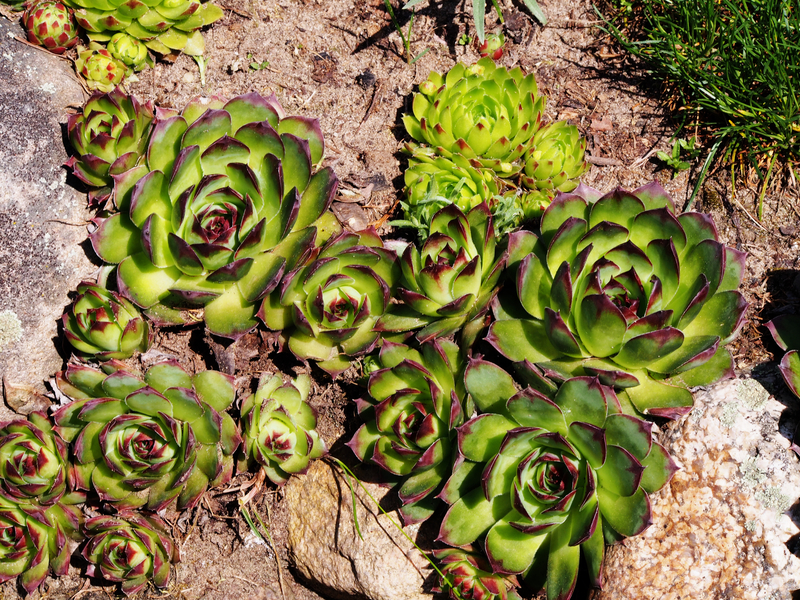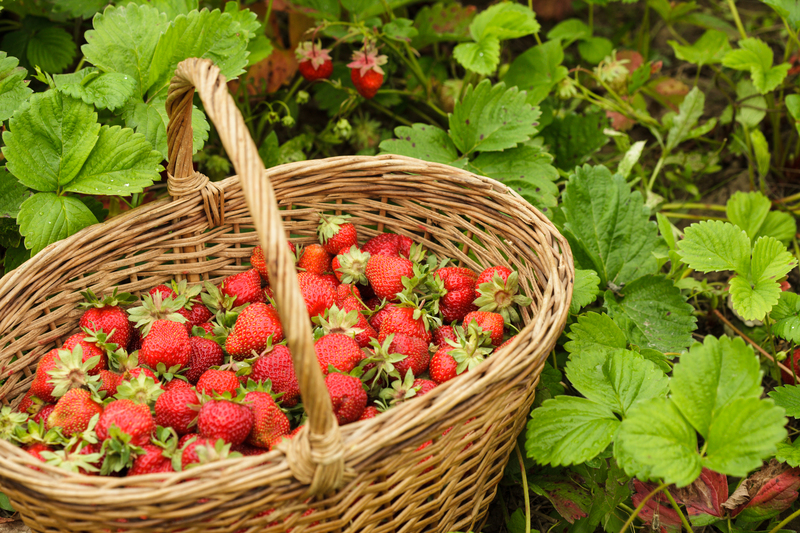Your Guide to Tropical Plant Varieties That Thrive in the UK Climate
If you've ever dreamt of transforming your British garden into a lush, exotic paradise but worried about the chilly weather, you're not alone. While the UK may not boast endless summer sunshine, it is surprisingly possible to cultivate an array of stunning tropical plant varieties right on your doorstep. With the right knowledge and preparation, you can create a garden that bursts with colour, drama, and a hint of the exotic - no plane tickets required!
Why Grow Tropical Plants in the UK?
UK gardeners are increasingly experimenting with tropical and subtropical plants to introduce bold textures and vibrant colours. These plants can transform urban courtyards, suburban gardens, or even small patios into magnificent escapes reminiscent of faraway lands. Not only do tropical-looking plants create visual excitement, but many also attract butterflies, bees, and birds, enhancing your garden's ecosystem.
Common Misconceptions about Tropical Gardening in Britain
- Too Cold to Succeed: While winters can be harsh, there's a surprising range of hardy tropical plants that withstand UK climates if properly cared for.
- Too High Maintenance: Many exotic plants are easy to grow and require similar care routines as classic British plants, once established.
- Limited Options: From bold-leaved palms to flamboyant flowers, there's an abundance of tropical foliage and flower varieties suited for Britain's mild, temperate conditions.

Choosing the Right Tropical Plants for UK Gardens
When planning your exotic garden, focus on plant varieties that are resilient, adaptable, and cold-hardy. While true tropical plants may struggle, many "tropical-look" species thrive with simple winter protection or in sheltered spots. Here are some of the best and most reliable choices:
1. Hardy Banana Plants (Musa basjoo)
- Appearance: Large, paddle-shaped leaves that instantly add height and drama.
- Climate Tolerance: The Musa basjoo is renowned as the world's hardiest banana, with mature rhizomes surviving down to -10?C when well-mulched.
- Care Tips: Protect the base with straw or fleece during harsh winters and feed regularly during the growing season for vigorous leaf growth.
2. Hardy Palms
Palm trees evoke images of sun-soaked beaches but some species, such as the Trachycarpus fortunei (Chusan Palm), withstand British winters.- Appearance: Fan-shaped fronds give an instant exotic touch.
- Climate Tolerance: Hardy down to -15?C; prefers a sunny, sheltered site.
- Other Options: Try Chamaerops humilis (European Fan Palm) for a shorter, bushier look.
3. Tree Ferns (Dicksonia antarctica)
- Appearance: Elegant, feathery fronds unfurl from woolly brown trunks, offering ancient rainforest vibes.
- Climate Tolerance: Tolerates light frosts with crown and trunk protection.
- Care Tips: Water the crown during dry spells and mulch heavily over winter; tree ferns love moist, shady corners.
4. Exotic Flowering Plants
For dazzling flower displays, several tropical flowering varieties deliver reliable blooms in British conditions:
- Canna Lilies: Big, bold, and available in vivid reds, oranges, and yellows. Protect rhizomes over winter in colder regions.
- Hedychium (Ginger Lily): Fragrant, showy flowers. Most hardy to -5?C with mulch.
- Passiflora caerulea (Blue Passion Flower): Vigorous climber with intricate flowers and edible fruit.
- Fuchsia magellanica: Hardy variant perfect for the UK, bringing exotic-looking blooms through summer and autumn.
5. Structural Foliage Plants
Striking leaves can lend a tropical look even in cooler climates. Choose from these popular alternatives:
- Tetrapanax papyrifer 'Rex': Giant, palmate leaves and a bold silhouette; thrives in sheltered spots.
- Fatsia japonica: Glossy, deeply lobed leaves make this shrub a tropical staple. Tolerates sun or partial shade and is cold-hardy down to -15?C.
- Hostas: Large-leafed perennials known for their resilience and architectural interest.
- Colocasia (Elephant Ears): Huge, dramatic leaves, best grown in pots and moved indoors for winter.
How to Grow and Protect Tropical Plants in the UK
Successfully cultivating tropical plant varieties in the UK involves planning, ongoing maintenance, and a few nifty tricks:
Creating the Right Microclimate
- Select a Sheltered Spot: South or west-facing beds, courtyards, or against house walls trap warmth and protect from wind.
- Use Structures: Greenhouses, polytunnels, or even conservatories allow you to overwinter tender species or start them early in the year.
- Companion Planting: Group plants closely to create humid, sheltered pockets and mimic jungle conditions.
Soil Preparation and Fertility
- Rich, Moisture-Retentive Soil: Almost all tropical foliage plants love fertile soil with reliable moisture and good drainage.
- Add Organic Matter: Incorporate compost, manure, or leaf mould annually for strong growth and better cold resistance.
- Mulch Generously: A thick mulch in autumn insulates roots and helps conserve moisture through summer.
Watering and Feeding
- Consistent Watering: Most exotics need regular watering, especially during dry spells and when establishing.
- Liquid Feed: Feed with a balanced liquid fertiliser every few weeks from late spring to early autumn.
- Avoid Waterlogging: Overwatering is as harmful as drought; ensure pots or beds drain freely.
Winter Protection Strategies
Winter is the toughest challenge for tropical plant varieties in the UK, but with these strategies, you can keep your garden thriving:
- Fleece and Mulch: Wrap vulnerable leaves and trunks in horticultural fleece or bubble wrap and mulch around the base.
- Lift and Store: Some tubers (such as cannas and dahlias) should be lifted from the ground, dried off, and stored in a frost-free location.
- Potted Plants: Move containers into a shed, greenhouse, or even indoors for the coldest months.
- Wind Protection: Erect barriers for newly planted or wind-sensitive exotics - even a trellis or dense shrub can help.
Design Tips for Creating a Tropical-Style Garden in the UK
Designing with tropical plants creates an immersive, mood-lifting retreat. Use these garden design principles to pack maximum visual impact:
Layering and Structure
- Layer Plants: Combine tall palms and bananas at the back, tree ferns and gingers in the middle, and bold-leafed perennials at the front for a true canopy feel.
- Repetition: Use small groups and repeating plant forms to avoid a chaotic look.
- Add Height: Use large containers, raised beds, or creative supports to elevate foliage and flowers.
Colour and Contrast
- Tropical Colour Palettes: Opt for vibrant reds, oranges, and yellows, paired with bold green, bronze, or purple foliage.
- Contrast Forms: Combine spiky palms with round-leaved fatsia or lush hostas for striking contrast.
- Ornamental Features: Include bright pots, mosaic tiles, or a water feature for a truly exotic ambience.

Top 12 Tropical Plant Varieties to Try in Your UK Garden
- Musa basjoo (Hardy Japanese Banana)
- Trachycarpus fortunei (Chusan Palm)
- Dicksonia antarctica (Tasmanian Tree Fern)
- Fatsia japonica (Japanese Aralia)
- Tetrapanax papyrifer 'Rex'
- Canna indica (Canna Lily)
- Colocasia esculenta (Elephant Ears)
- Passiflora caerulea (Hardy Passion Flower)
- Hedychium aurantiacum (Hardy Ginger Lily)
- Chamaerops humilis (European Fan Palm)
- Hosta sieboldiana
- Ricinus communis (Castor Oil Plant, for summer bedding)
Frequently Asked Questions (FAQ) about Tropical Plants in the UK
Which tropical plants survive winter in the UK?
Many hardy tropical plants survive British winters with minimal protection. Try Musa basjoo, Trachycarpus fortunei, Fatsia japonica, Dicksonia antarctica, and Tetrapanax papyrifer 'Rex' for reliability.
Can you grow palm trees outside in the UK?
Yes! Hardy palm trees such as the Chusan Palm (Trachycarpus fortunei) and European Fan Palm (Chamaerops humilis) thrive outside in much of the UK with shelter from harsh wind and free-draining soil.
How do you make an exotic garden low maintenance?
Choose established, robust varieties and mulch well. Group tropical foliage plants by water and sunlight needs. Avoid exotics that require frequent lifting or special winter care if you prefer a low-effort garden.
When should I plant tropical varieties in the UK?
Late spring (after the last frost) is best for planting or moving tender exotics outdoors. Prepare soil in advance and gradually acclimatise young plants to outdoor conditions.
Can tropical plants attract wildlife?
Yes! Many tropical and subtropical blooms - especially ginger lilies, passion flowers, and cannas - are a magnet for bees, butterflies, and even birds.
Conclusion: Transform Your UK Garden with Tropical Flair!
Cultivating tropical plants in the UK is far easier than many gardeners realise. The breadth of hardy exotic plant varieties now available allows anyone, from beginner to expert, to enjoy the thrill of a lush jungle landscape. All it takes is thoughtful plant selection, expert care during winter, and creative design to enjoy a unique, unforgettable garden oasis.
Whether you're planting your first banana palm, designing a full-blown tropical border, or simply adding a bold ginger lily to the patio, this guide will help you pick and nurture the best tropical plant varieties that thrive in the UK climate.
Bring the tropics home - your UK garden will never look the same!